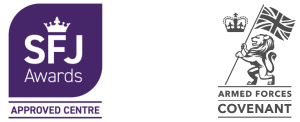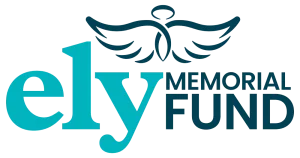We challenge the notion of “hard-to-reach learners,” reframing them as under-served individuals with untapped potential. This blog explores how MEP partners with government, military, and third-sector organisations to design flexible, impactful learning pathways that truly include.
Bridging gaps that others can’t (or won’t) – and why that matters
Introduction
When an individual says “learning isn’t for me,” they’re often speaking from a lifetime of obstacles — institutional walls, unstable circumstances, hidden costs, or past failure. To many, education feels like a fortress with no gate. At Minerva Elite Performance (MEP), we see those individuals not as “hard to reach” but as “calling to be reached.”
This difference in framing matters deeply. Because our mission is to open doors where doors have been closed. Because our values — clarity, excellence, growth, performance under pressure, lived experience — demand that we serve the margins, the unconventional, and the overlooked.
Our partners (governments, third-sector organisations, military institutions) know that this is not charity. It is strategic investment. When those who are currently excluded enter education paths, the ripple effects are systemic: stronger communities, more resilient workforces, deeper social cohesion, lower reliance on crisis services.
In this article, we’ll explain:
- Who we mean when we say “hard‑to‑reach learners.”
- Why many systems fail them.
- How MEP’s approach is different — rooted in real experience, not theory.
- What partnerships with us can accomplish.
And, of course: how to explore our courses and get this work moving.
Defining “Hard‑to‑Reach Learners” in Context
The phrase is often used as shorthand — but it obscures more than it reveals. At MEP, we define “hard‑to‑reach learners” as people for whom conventional education systems pose more barriers than bridges. They may include:
- Active service personnel or veterans dealing with relocation, time constraints, or reintegration challenges
- Military families under frequent moves, struggling to plug gaps in children’s or spouses’ education
- Non‑native English speakers or migrants whose language, culture, or prior educational experience doesn’t map neatly onto mainstream systems
- Disengaged adults who’ve tried and failed formal education and now resist returning
- People in volatile life circumstances (unstable housing, caregiving pressures, trauma histories) for whom consistency is a luxury
These are not “less capable” people. In many cases, they are highly capable, adaptive, resilient individuals whose life context demands a different pathway, not exclusion.
The DfE-commissioned research by Kantar Public and Learning and Work Institute underscores that adult learners continually weigh perceived benefits and costs — and often conclude that the costs are too high. But cost is not always money. Cost is: lost time, inflexible hours, fear of failure, language insecurity, transport burden, rigidity of curriculum.
Our goal at MEP is to shift that balance — to make benefits far more visible, tangible, and attainable than the costs.
The systemic failings that keep people out
Here’s the candid truth: most education systems are optimised for the already-engaged, not the left-behind.
A. One‑size-fits-all delivery
Courses scheduled rigidly (Monday to Friday, 9–5) exclude shift workers, deployed personnel, and caregivers. Digital or in-person only models disqualify those with limited internet or transport.
B. Academic language and content assumptions
Course materials often assume prior literacy, culture, or educational frameworks. For someone whose first language is not English, or whose prior schooling was interrupted or differently structured, talking about “modules” or “assessments” can feel alienating.
C. Poor support structures
Many programs offer little scaffolded support — no mentoring, no pastoral catch-up, and minimal personalisation. When learners struggle, they fall through cracks.
D. Lack of trust or legitimacy
Communities or individuals may distrust formal institutions (due to past negative experience, stigma, or perceived elitism). They need proof in practice, not promises on paper.
E. Insufficient linkage to real outcomes
Learners often ask: How will this change my life? If the pathway to employment, progression, or measurable improvement is opaque, many disengage before completion.
These are systemic design issues, not learner deficits. To reach those on the margins, educational delivery must be remade from the bottom up.
The MEP Approach: From lived experience to lasting impact
We don’t claim to have all answers. But we do have an orientation rooted in values, lived experience, and operational realism. Here’s how our approach stands apart:
A. Values as foundation
- Clarity: we simplify language, expectations, and timelines — no jargon, no hidden surprises.
- Excellence: high standards in content and delivery, refusing the excuse of “less-than” for marginalised learners.
- Growth: learning is non-linear; we accept setbacks and use them as launchpads, not endpoints.
- Performance under pressure: many of our learners operate in extreme or volatile contexts; we build systems that flex under those pressures rather than collapse.
- Lived experience: many of our team or associates have walked similar roads — military, non-traditional pathways, and adversity. That empathy changes how we design and deliver.
B. Modular, adaptive delivery
We break out of “full-course-or-nothing” logic. Learners can enter via micro-credentials, modular blocks, mixed modes (self-paced + coached), and flexible timing windows. This lets them build confidence without overcommitment.
C. Scaffolded support and mentoring
Every student has a human point of contact. Mentors, peer groups, check-ins, catch-up modules — we never leave them to self-navigate.
D. Embedded contextual relevance
Military learners may have tactical, operational, or strategic components built in; language learners may have workplace English modules. Everything is designed with the learner’s world in view.
E. Partnerships that amplify reach
We don’t go it alone. We partner with local NGOs, military welfare services, community groups, and government agencies to cultivate trust, access, and enrolments in communities others can’t reach.
F. Clear outcome paths
We map clearly: “this module leads to this certification, which maps to these roles or next-level qualifications.” Learners don’t have to guess whether it’s worth their time.
What a Partnership with MEP Delivers
To you (a government agency, military institution, or third-sector body), partnering with MEP is not overhead. It is impact acceleration. Here’s what you buy into:
1. Reach into challenging populations
Your goals may include raising educational inclusion, reducing social inequality, reintegrating veterans, or improving workforce readiness. We’ve proven capacity to reach and sustain learners in contexts others can’t.
2. Credible, scalable delivery
Our systems are tested, resilient, and designed to scale. We don’t just pilot. We embed.
3. Shared mission and values
You partner with a provider whose decision-making is values-driven. Our integrity and resolve mean that we don’t cut corners or lower standards for expediency.
4. Flexible, outcomes-aligned models
We can design bespoke curricula, modular pathways, or hybrid programmes to suit policy goals, budgets, and institutional constraints.
5. Measurement and accountability
We track enrolment, retention, progression, qualitative feedback, and longitudinal outcomes — not just pass/fail rates.
6. Institutional legitimacy and social trust
Because we frequently embed in community settings, military networks, or local NGOs, our delivery carries immediate legitimacy, easing outreach and uptake.
7. Legacy beyond each cohort
Learners who succeed become ambassadors. They shift perceptions of possibility in their circles. Partnering with MEP creates generational influence, not just cohort-level outcomes.
Illustrative Scenarios (hypothetical use cases)
Here are three hypothetical but realistic partner use cases — to show how the model can be deployed.
Scenario A: Government Employment Agency
A regional government wants to reduce long-term unemployment among migrants and veterans. Partnering with MEP, they commission a modular training pathway combining ESOL, vocational skills, and leadership fundamentals, delivered jointly via community centres and online hubs. Uptake among traditionally excluded neighbourhoods doubles. Retention improves by 40 %. Graduates move into sustainable employment, reducing welfare dependency.
Scenario B: Military Transition Programme
A nation’s armed forces seek to support transitioning soldiers into civilian careers. MEP designs a “service‑to‑skills” programme that aligns military experience with recognised qualifications (e.g., Level 5, Level 7 equivalence). While deployed, participants begin modules; post-discharge, they complete via hybrid delivery. The result: fewer service leavers unemployed, smoother reintegration, stronger civil–military bonds.
Scenario C: Third-Sector Social Inclusion
An NGO working with refugees and displaced people wants to deliver English + life-skills programming. MEP delivers a co-branded pathway: English for work, cross-cultural workplace modules, mentoring support, connections with local employers. Because of our adaptive model and trust networks, dropout rates are measurably lower than standard ESOL programmes in the region.
Each scenario illustrates not just a programme but a systemic shift — turning exclusion into participation, potential into performance.
Reinforcing Mission — Our North Star
Across all our work is a central conviction: learning is for everyone — without exception. That statement is not a marketing slogan. It is a lived commitment.
We believe:
- The greatest human waste is not joblessness but unrealised capability.
- Inclusion is not optional — it is performance logic in mission-critical systems.
- Doing well and doing good are not divergent paths; they amplify each other.
- When someone who believed “education was closed to me” completes a course, it changes their worldview — and by extension, the worldview of every person around them.
We bring this conviction into every partnership, not just in idealism but in governance, reporting, curriculum design, staff recruitment, and resource allocation.
We invite partners to hold us to that standard, to demand transparency, excellence, and integrity. Partnerships that tolerate lower standards or extractive logic will not work with us.
View Our Courses & Begin the Journey
If the vision here — of reaching where others can’t, of building bridges rather than barriers — resonates with your institutional goals, the practical next step is simple: explore our course catalogue.
Our programmes span strategic leadership, education & training, conflict management, first aid, employability, and more — all designed with modular flexibility and the lived realities of marginal learners in mind.
By partnering with MEP, you’re not just sponsoring learners; you’re sponsoring transformation — at the human, institutional, and societal scale.
Let’s work together to make inclusion a performance lever, not a footnote. Let’s unlock human potential.
Latest news from the MEP blog
-
Leaving the military? Don’t leave money on the table. If you’re planning your transition from the Armed Forces to civilian life, ELCAS funding is one of the most powerful…
-
Civilian employers don’t always understand military roles. With a Level 7 or MBA, you’re translating your experience into language the business world understands. It gives you…
-
We challenge the notion of “hard-to-reach learners,” reframing them as under-served individuals with untapped potential. This blog explores how MEP partners with government,…





